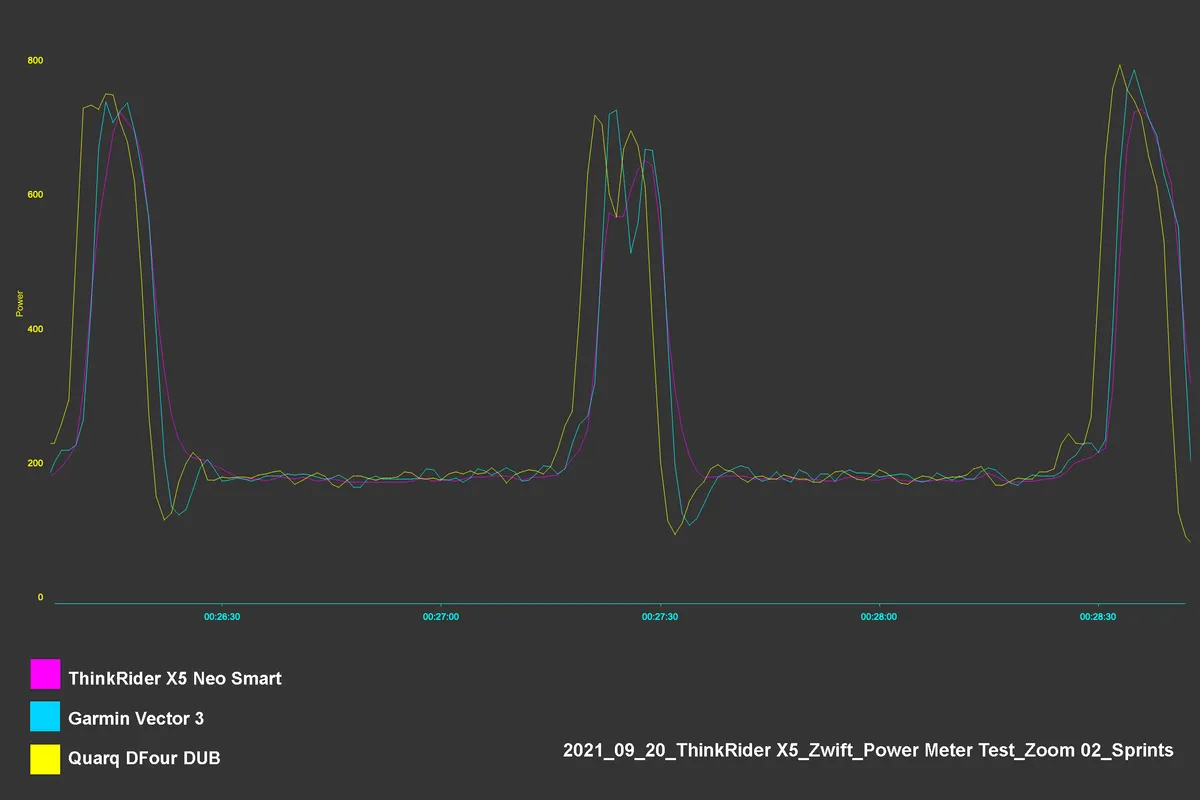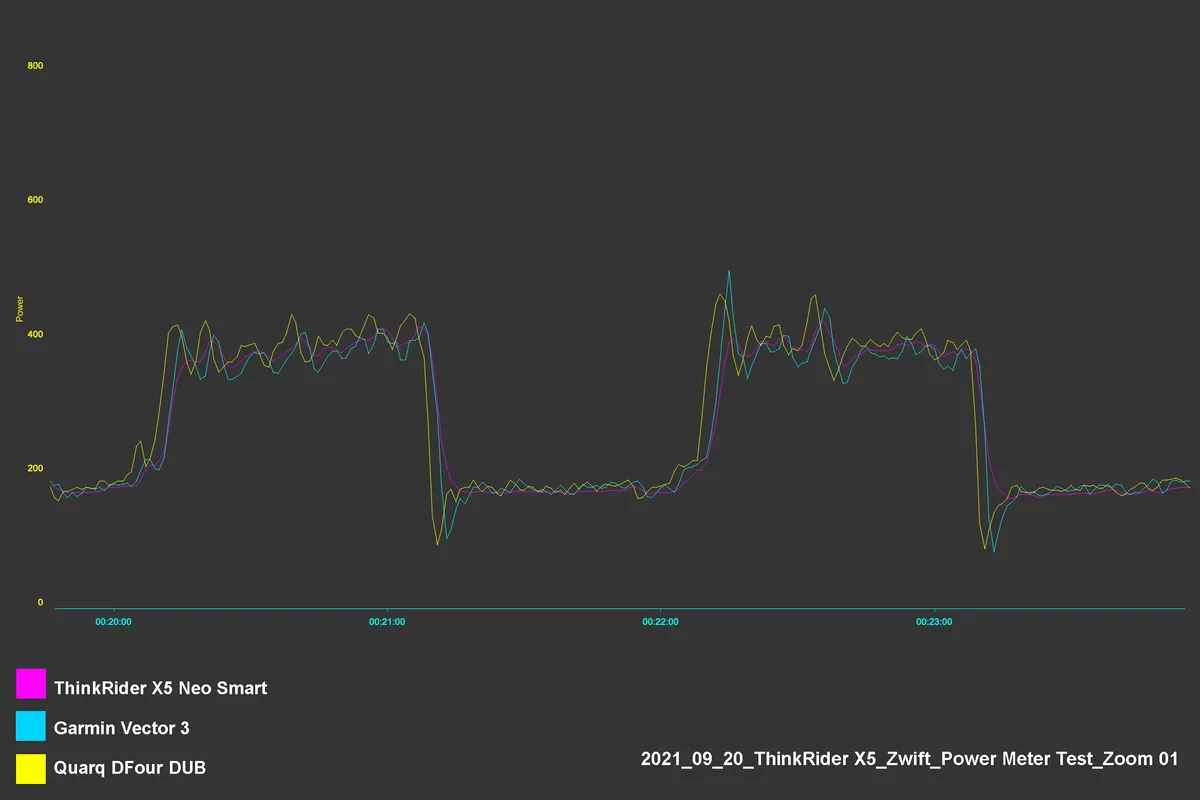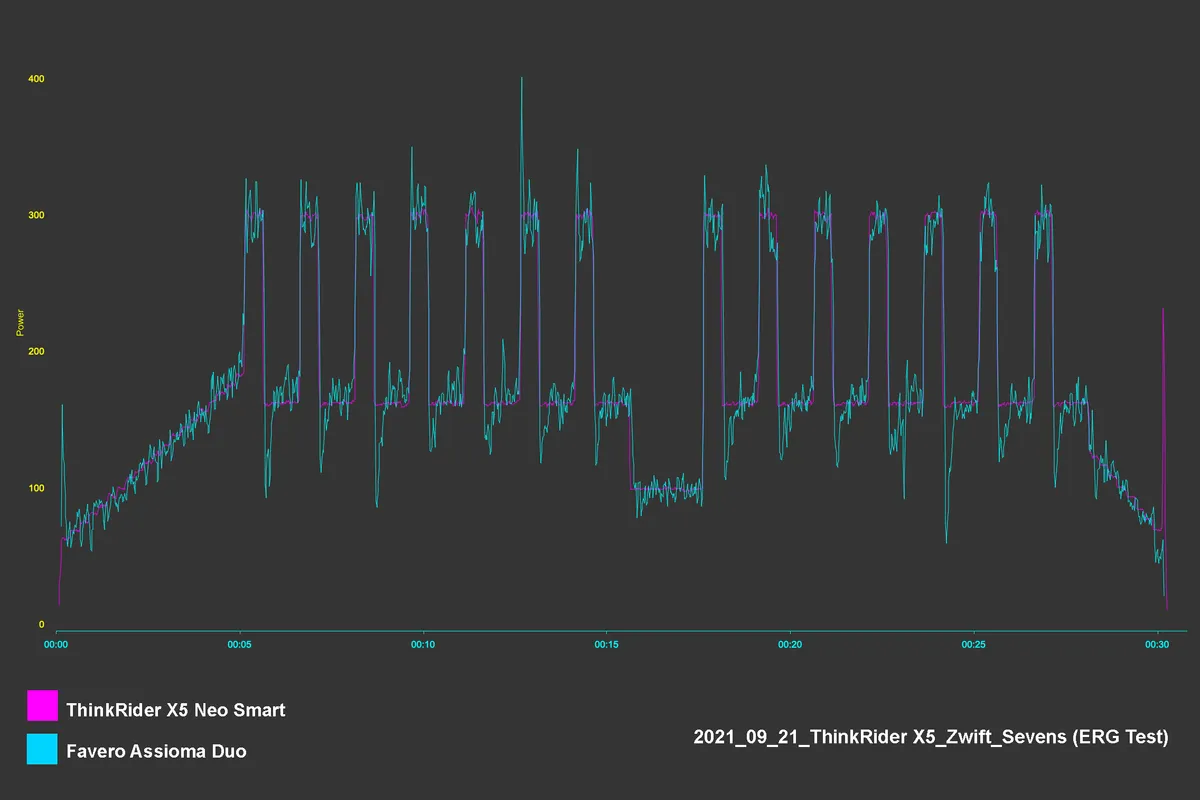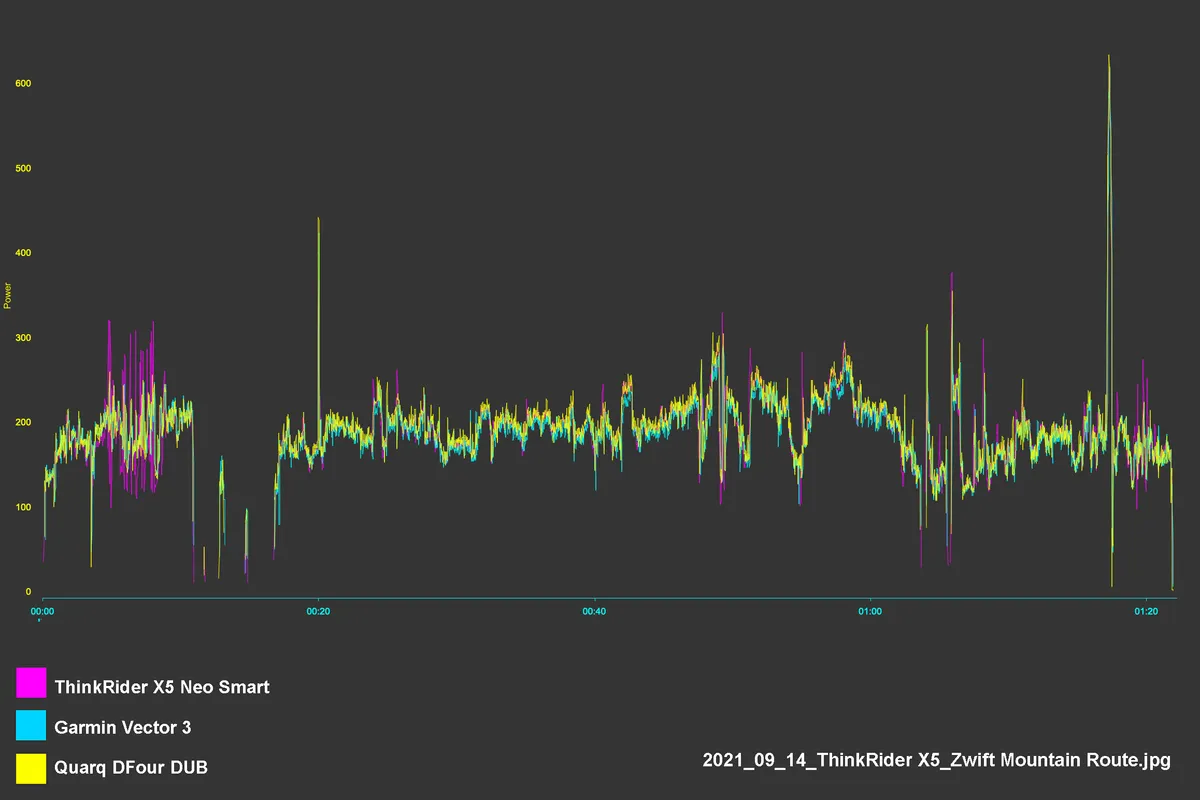The ThinkRider X5 Neo Smart is a direct-drive smart trainer that boasts a modern design and an impressive specification at an attractive price.
In the United Kingdom, ThinkRider is distributed by Xclusive Sports Distribution Ltd, which operates on a direct to consumer basis, helping to keep costs down.
On paper, the X5 Neo Smart offers a spec comparable to units that cost hundreds of pounds more. ThinkRider has taken a big swing then, but has it hit a home run straight out of the park and into our list of the best smart trainers, or is the X5 Neo Smart heading for an early shower?
Overall, the X5 Neo Smart isn’t perfect, but it is more hit than miss. Though it lacks the refinement some of its less ambitious competitors are able to deliver at a similar price point, it is a good smart trainer for the price, which delivers solid performance in many areas.
ThinkRider X5 Neo Smart setup
Out of the box, the X5 Neo Smart requires very little assembly. All you need to do to get riding is attach the supporting legs with the included bolts and a 5mm Allen key.
Having plugged the trainer in and slotted in the correct axle end caps for your bike (adaptors for 142/148mm thru-axles and 130mm/135mm quick-release skewers are included), the X5 Neo Smart can be up and ready to use in minutes.
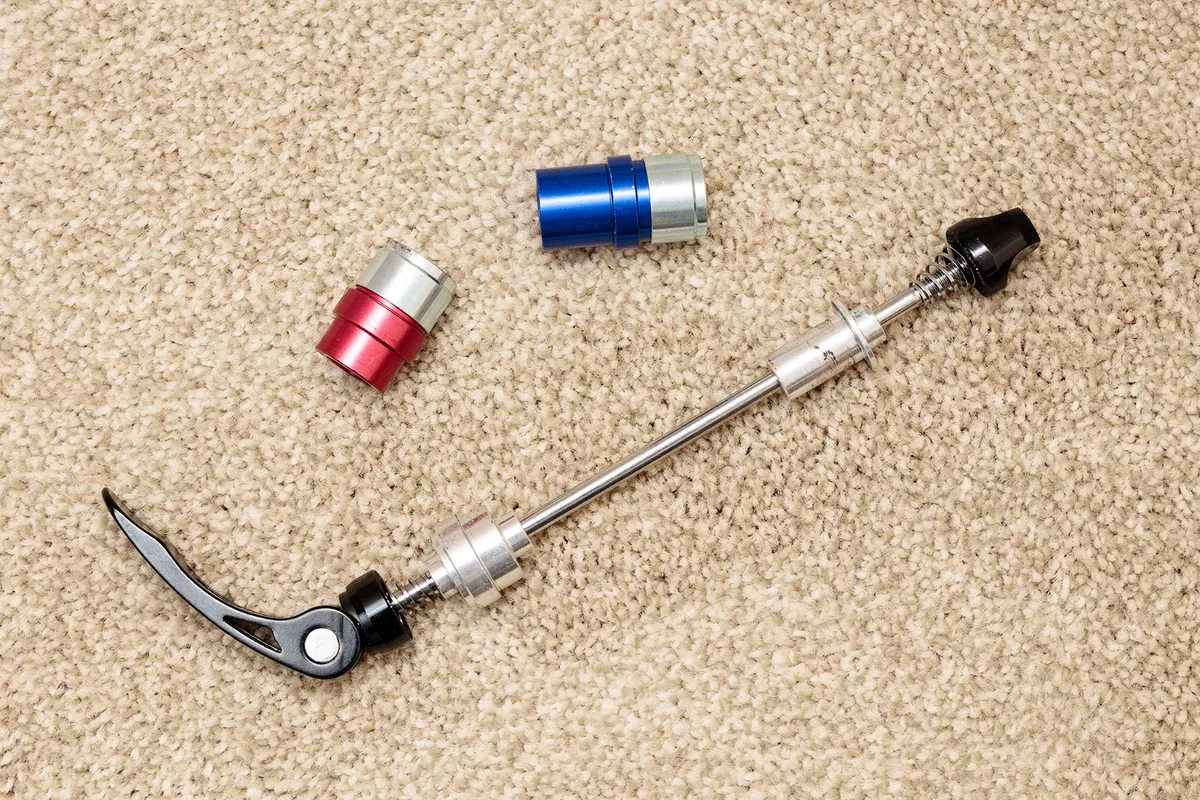
The X5 Neo Smart ships with a Shimano / SRAM, 8- to 11-speed compatible freehub. If you’re using a bike with SRAM AXS 12-speed, an XDR compatible freehub can be purchased separately from ThinkRider for £49.99.
If you’ve purchased the smart trainer alone, you’ll need to add a cassette of your choice.
On the other hand, if you’ve opted for the bundle option (£499), a Shimano / SRAM compatible 11-28t 11-speed cassette comes pre-installed. The bundle also includes a trainer mat and a top tube sweat guard.
Shifting across the ThinkRider-branded cassette isn’t on par with that of a genuine Shimano or SRAM option but, in an era of industry-wide parts shortages, it is very much better than nothing.
The X5 Neo Smart weighs 21.4kg with the cassette and thru-axle adaptors in place, which is quite a bit heavier than most other trainers around this price (the similarly-priced Elite Zumo weighs 13.08kg, for example).
The legs don’t fold away for storage either. So even though it’s quite compact in size, it’s still more of a setup-and-leave-in-place type smart trainer. ThinkRider has at least added a handle to make the X5 Neo Smart easier to move around, though.
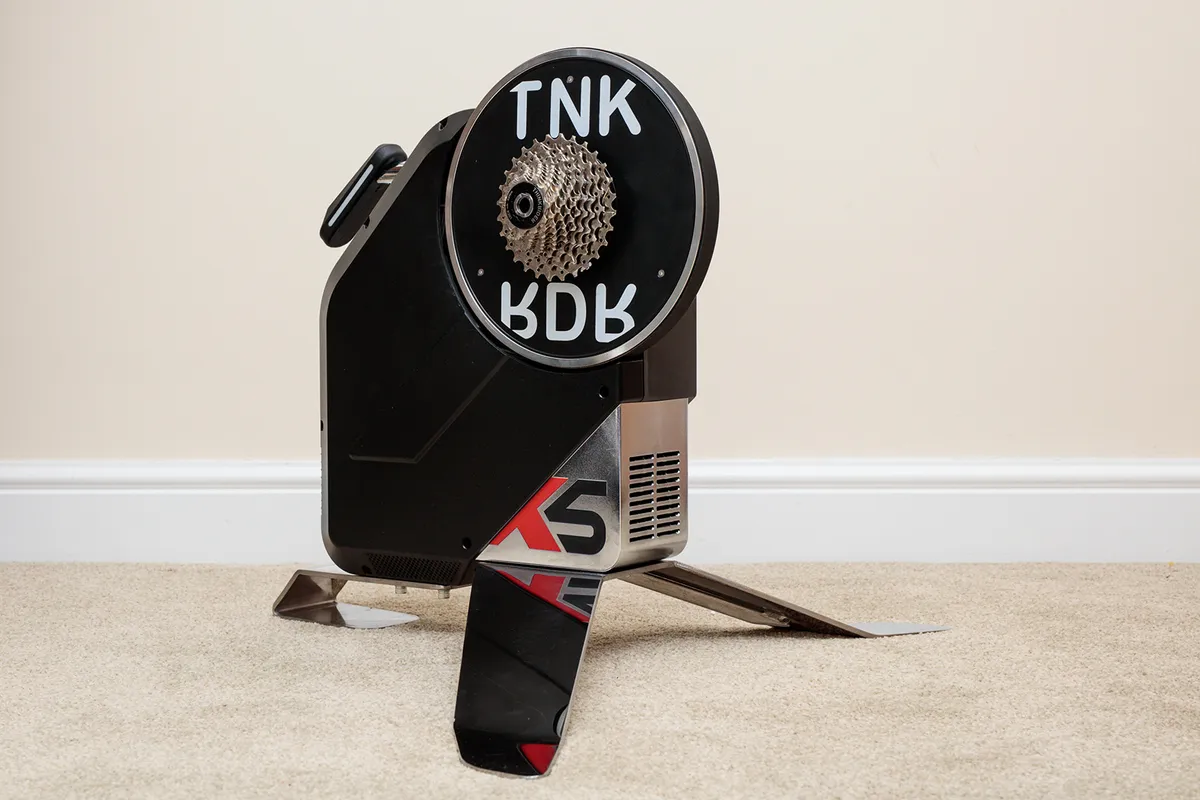
ThinkRider offers a two-year warranty as standard, plus a 30-day money-back guarantee on any unused items (in case you decide you just prefer outdoor cycling after all).
The brand also says if you do run into any issues it will repair or replace your unit within five days.
ThinkRider X5 Neo Smart in-use
Connectivity
Connecting to Zwift presented no issues, with either ANT+ or Bluetooth.
It’s not possible to zero-offset (calibrate) the X5 Neo Smart in Zwift, as things stand. This means you have to do it via ThinkRider’s smartphone app, which can also be used to update the firmware as needed. The process is very simple, though, and it worked every time.
I did see one data dropout during testing, but nothing persistent, so I’m happy to chalk that up to random ANT+ signal interference.
It’s worth noting the X5 Neo Smart doesn’t transmit any cadence data. Instead, a separate speed/cadence sensor is included with the trainer. This can be mounted on either your crank arm for cadence or your wheel hub for speed (though this function would only work outdoors).
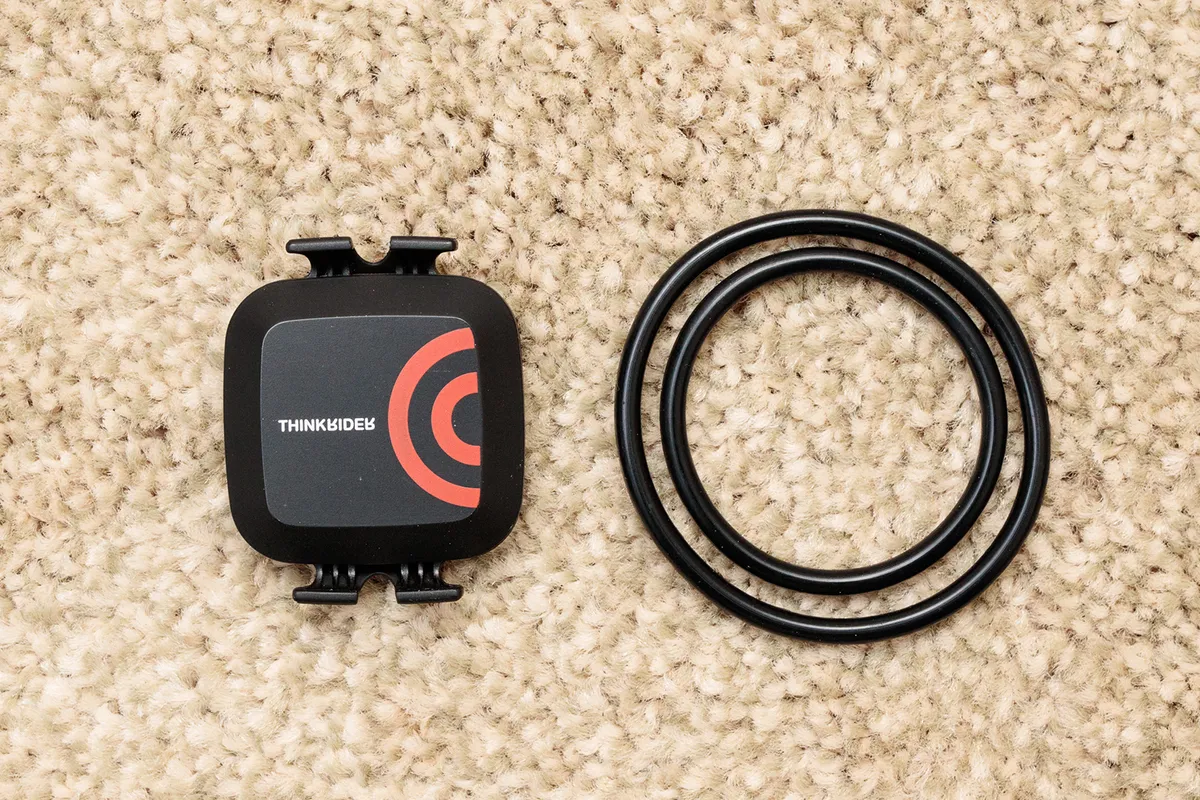
According to Xclusive Sports Distribution Ltd, ThinkRider originally tried to build a cadence sensor into the X5 Neo Smart, but couldn’t get it to produce consistently accurate data. As a result, it decided a separate, crank-based cadence sensor would be preferable.
I was initially concerned about this because cadence is a vital data point for ERG mode workouts, which typically have a set target cadence for each interval.
On top of that, having a separate sensor means you’ll have to swap it between bikes (if you’re fortunate enough to have multiple bikes) and replace the CR2032 coin cell battery every now and again.
ThinkRider claims a 340-hour battery life for the speed/cadence sensor though, so this shouldn’t be too much of a burden.
Fortunately, my fears were mostly allayed, and ERG mode workouts generally worked absolutely fine. More on this later, though.
Ride feel
The X5 Neo Smart has a claimed maximum power output of 2,000 watts and can simulate gradients up to 15 per cent. Likely enough to satisfy all but Olympians.
In simulation mode, in-game gradient changes are replicated quickly and the 6kg flywheel contributes to an impressively realistic ride feel, with very good levels of inertia.
Here, the X5 Neo Smart is on par with pricier trainers like the £829.99 Elite Direto XR, which actually has a slightly lighter 5.1kg flywheel.
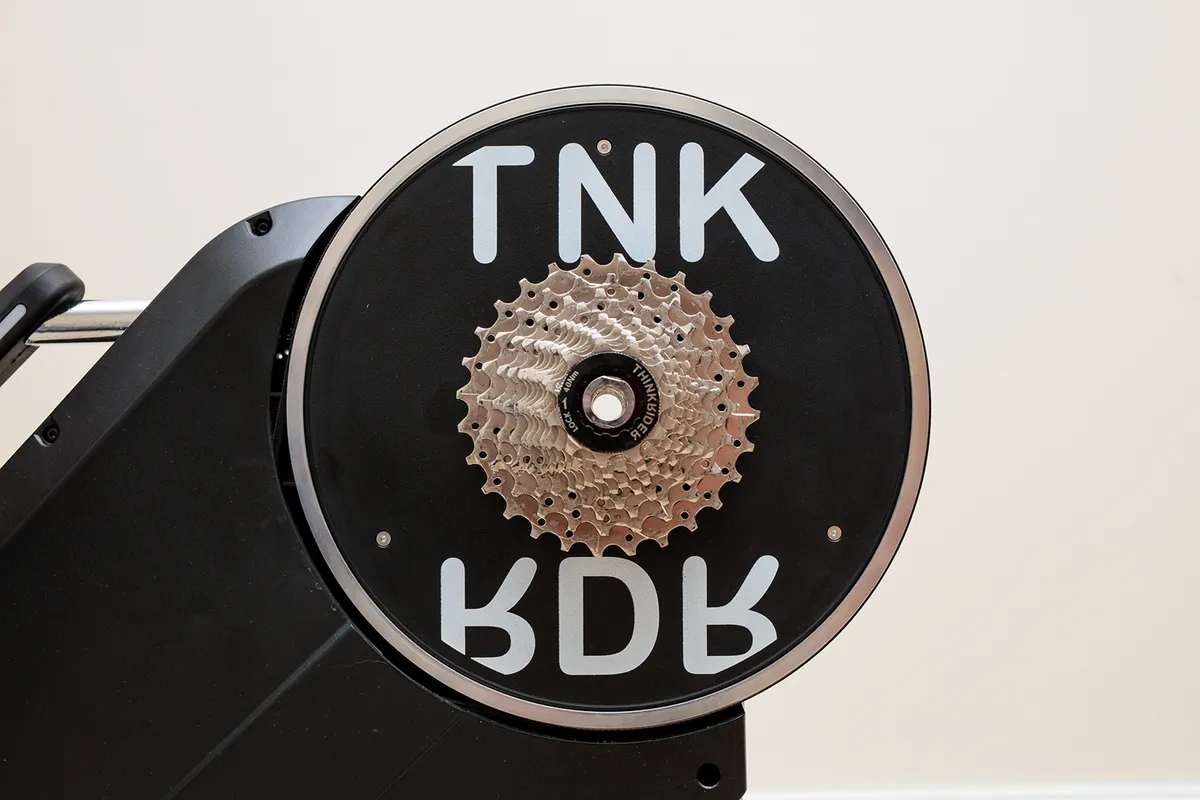
ThinkRider says the X5 Neo Smart offers “8 degrees either way of lean”, which is claimed to improve the realism of the ride feel. I’m not entirely convinced, though.
The majority of its weight is located in the central part of the unit. This part of the trainer sits elevated off the floor, raising the centre of gravity and making it a bit top-heavy.
Coupled with the fact that the legs (which ThinkRider amusingly calls “chrome seal flippers”) are relatively light, the X5 Neo Smart isn’t the most stable smart trainer on the market.

It feels great while riding in the saddle, but the amount of tilt on offer here feels a touch too much for my tastes when you’re out of the saddle and churning a big gear. In those situations, the movement of the trainer beneath you can be a bit distracting.
Things are rosy in terms of noise, though. My smartphone-based app (located in line with my handlebar on the driveside of my bike) recorded an average sound level of 68.2 dB when pedalling at 200 watts.
It’s fair to say my drivetrain was contributing a larger amount of noise than the X5 Neo Smart. Once you start pedalling, the sound from your drivetrain essentially drowns out any noise from the trainer.
ThinkRider X5 Neo Smart power accuracy
ThinkRider claims the X5 Neo Smart is accurate to +/- 2 per cent, and while I found that to be true on average, the moment-to-moment details weren’t always perfect.
On a macro scale, the power data consistently aligned well with on-bike power meters, and sustained resistance (and the resultant heat build-up) didn’t cause the data to drift.
In ERG mode, the X5 Neo Smart responds to changes impressively quickly (within a couple of seconds) and holds the target power reasonably well.
In simulation mode, I did see a few instances where the power would start spiking up and down compared to on-bike power meters, typically for a couple of minutes before realigning.
The X5 Neo Smart also seems to apply some smoothing to the power data, in both ERG and simulation modes.
In simulation mode, the power data seems unnaturally smooth (obvious spikes aside) compared to on-bike power meters. In ERG mode, the power data produces graph lines so straight they look like battlements.
Inevitably, these don’t match up to the more variable lines produced by a power meter directly measuring your real-time pedalling force.
Consequently, the X5 Neo Smart misses the peaks and troughs in power output you tend to get at either end of hard intervals, sprints or attacks. As a result, sprints seemed to under-report by roughly 5 per cent.
Nevertheless, for general day-to-day training and virtual riding, the X5 Neo Smart’s power accuracy will likely be satisfactory for most.
Those into serious esports or Zwift racing, however, may want something that is able to more accurately translate their every effort onto the virtual racecourse.
ThinkRider X5 Neo Smart conclusion
All things considered, the ThinkRider X5 Neo Smart delivers a strong all-round performance, despite some flaws.
On spec alone, it ambitiously competes with smart trainers that cost hundreds of pounds more. In use, it does impress in many areas, but it could be even better with a more restrained specification and a greater focus on nailing the basics.

Unless you’re a budding esports racer or serious data nerd, it’s possible none of the minor niggles I found will be deal-breakers.
In that case, I expect most would be more than happy with the performance of the X5 Neo Smart and equally happy with the competitive price.
How we tested
When testing a smart trainer, we consider its price point, how easy it is to set up and what accessories are (or aren’t) included in the box.
Once a trainer is ready to ride, we put it through a series of tests to assess ride feel, power accuracy and how quickly it responds to virtual gradient changes and ERG mode power shifts.
With ride testing complete, we then compare the trainer’s power data to an on-bike power meter, to check whether or not the trainer gives accurate readings on a consistent basis.
BikeRadar’s expert team has tested all of the most popular smart trainers over the years and you’ll find the top scorers in our best smart trainers list, to help you choose the right one for you and your training or racing needs.
Product
| Brand | Thinkrider |
| Price | £499.00 |
| Weight | 21.40kg |
Features
| Mount | direct_drive |
| Trainer type | smart_trainer |
| Resistance type | electromagnetic |
| Connectivity | antPlus |
| Connectivity | bluetooth |
| Noise | 68.2000 |
| Noise | DECIBEL |
| Max power | 2000.0000 |
| Max power | WATT |
| Flywheel weight | 6.0000 |
| Flywheel weight | KILOGRAM |
| Max grade (degrees) | 15.0000 |

